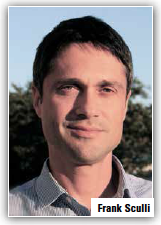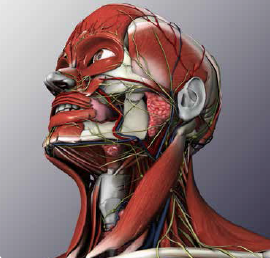The 3D Human Body
 Frank Sculli, Co-founder and CEO of BioDigital, talks about his company’s 3D technology that can produce a virtual model of the human body to help everyone better understand health and disease concepts.
Frank Sculli, Co-founder and CEO of BioDigital, talks about his company’s 3D technology that can produce a virtual model of the human body to help everyone better understand health and disease concepts.
The amount and complexity of health information continues to grow, but the way that it’s communicated has remained the same for more than 500 years; illustration, text, and spoken word remain the primary methods of learning. Studies show that nine out of 10 people don’t fully understand their health, and there is increasing demand on both patients and professionals to consume health information.
BioDigital has created a new approach to learning about and understanding the human body. By taking 3D technology that is now mainstream in video games and movies, the company has created a new way to visualize the human body.
Likened to Google Earth for the human body, the BioDigital Human is an interactive technology that explains medical conditions and concepts. The technology includes a collection of more 7,000 3D anatomy and health condition models to help users gain a better understanding of the human body through a gamified education experience.
In May, the company won a Webby Award for best health website at the 19th Annual Webby Awards presented by the International Academy of Digital Arts and Sciences. The awards honor excellence on the Internet, including websites, advertising and media, online film and video, mobile sites and apps, and social.
“People have learned primarily from illustration and the written and spoken word," says Frank Sculli, co-founder and CEO of BioDigital. “With the introduction of the Internet, text and illustration just moved online. But that didn’t really use or leverage the power of the electronic format."
Mr. Sculli says there is a huge transition on the horizon where learning is going from a more passive mechanism to a much more interactive and engaging model.
 “3D fills that void perfectly," he says. “We have seen the impact 3D has had on the video game industry and in Hollywood movies but nowhere does it better apply than to the representation of the human body and related health concepts."
“3D fills that void perfectly," he says. “We have seen the impact 3D has had on the video game industry and in Hollywood movies but nowhere does it better apply than to the representation of the human body and related health concepts."
Mr. Sculli says the BioDigital Human addresses huge deficiencies in health education and communication from diagnosis to drugs and devices. The technology provides a much more engaging way to explain complex health information.
The company has 1.2 million users across mobile, tablet, and the Web, and its technology is accessible to more than 90% of devices for the pharmaceutical, medical device, publishing, provider, and academic marketplace. It is being used by a wide spectrum of people across healthcare, but Mr. Sculli says the primary user base consists of academia, providers, pharmaceuticals, and device companies.
“Interactive 3D enables pharmaceutical companies to better communicate their therapeutics, both for internal and external clinical education," he says. “In a similar way, device companies can leverage the technology. In academia, there is even more diversity of use, from kindergarten through 12th grade to higher education to professional training."
Pharmaceutical companies can improve engagement with their salesforces, healthcare professionals, and consumers through customized virtual models. Examples include 3D visual aids, simulated physiology and procedures, and step-by-step virtual instruction guides.
Companies are able to analyze their impact on users through metrics on user activity and engagement, and since it is cloud-based it easily scales for mobile presentations and trade shows.
“Our team built this incredibly detailed virtual model of the human anatomy and different disease states so a pharmaceutical company can leverage what we’ve already done and imbed their treatment within that context," he says. “Once a treatment is imbedded a company can use the model for multiple purposes. A company can use the information at trade shows, in marketing, in communication efforts, and to train their salesforce; and their salesforce can use it to educate doctors on novel mechanisms of action."
The company is working to develop this platform to be combined with real patient data so that physicians will be able to generate 3D models of patients’ specific conditions and diseases.
“We have a very robust 3D map of the human body that includes not only anatomy by also physiology, health conditions, and treatment models," he says. "Ultimately, the models should become more and more personal so that people can finally see what’s happening inside their own bodies."
The company was founded in 2002 and before launching the software platform, BioDigital spent a decade helping customers in healthcare visualize their health information. In 2012, the company built this software platform to address the same problems but in a much more effective cloud-based and scalable way. The result was the BioDigital Human.
“The key is storytelling," Mr. Sculli says. “We have spent a lot of time and energy on making sure that not only is the content interactive and engaging but that our customers can really include their message within this 3D format. Our mission has been to provide a detailed view inside the human body of anatomy and disease, a 3D virtual model that would fundamentally lower the barriers for everyone around the globe to understand what’s happening within their body."(PV)


















